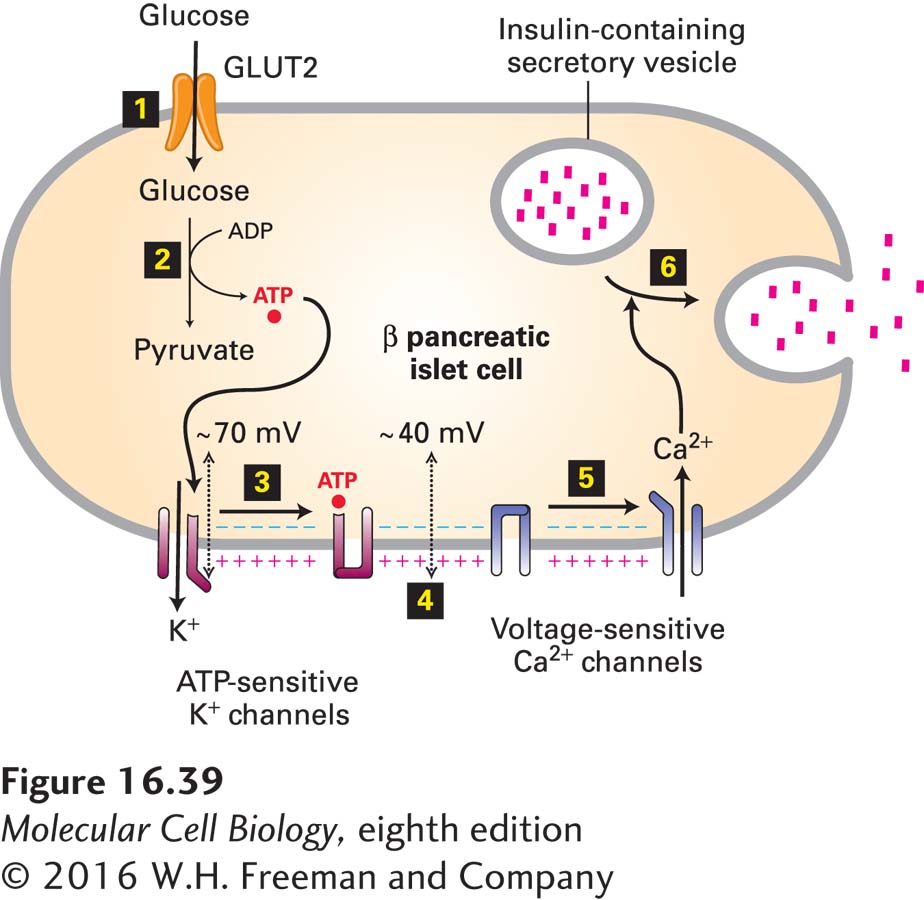
FIGURE 16- 39 Secretion of insulin in response to a rise in blood glucose. The entry of glucose into pancreatic β cells is mediated by the GLUT2 glucose transporter (step 1). Because the Km for glucose of GLUT2 is 20 mM, a rise in extracellular glucose from 5 mM, characteristic of the fasting state, causes a proportional increase in the rate of glucose entry (see Figure 11- 4 ). The conversion of glucose into pyruvate is thus accelerated, resulting in an increase in the concentration of ATP in the cytosol (step 2). The binding of ATP to ATP- sensitive K+ channels in the β cells closes those channels (step 3), thus reducing the efflux of K+ ions from the cell. The resulting small depolarization of the plasma membrane (step 4) triggers the opening of voltage- sensitive Ca2+ channels (step 5). The influx of Ca2+ ions raises the cytosolic Ca2+ concentration, triggering the fusion of insulin- containing secretory vesicles with the plasma membrane and the secretion of insulin (step 6). See J. Q. Henquin, 2000, Diabetes 49:1751.
[Leave] [Close]